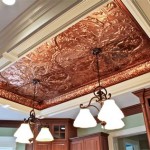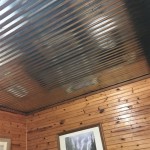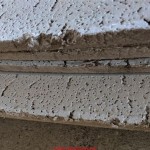Are High Ceilings Good for Acoustics?
High ceilings, a common feature in modern architecture and design, offer an aesthetic appeal of spaciousness and grandeur. However, their impact on acoustics is a complex issue with pros and cons that need careful consideration. While they can enhance sound diffusion and create a sense of openness, high ceilings can also lead to sound reverberation, making spaces less comfortable for communication and activities requiring clarity. Understanding the acoustic implications of high ceilings is crucial for architects, interior designers, and homeowners seeking to optimize the acoustic performance of their spaces.
Sound Diffusion and Reflection
High ceilings can contribute to better sound diffusion. Sound waves, when encountering a surface, reflect back into the space. In rooms with lower ceilings, these reflections tend to bounce back at shorter distances, leading to concentrated sound waves and potential echo. High ceilings provide a larger surface area for sound to spread over before reflecting, leading to a more diffused sound field. This diffusion can be beneficial in spaces requiring more even sound distribution, such as concert halls or auditoriums, where a balanced acoustic experience is desired.
Reverberation Time
However, while sound diffusion can be positive, high ceilings also increase the reverberation time of a space. Reverberation time refers to the duration it takes for sound to decay by 60 decibels after the source has stopped. Longer reverberation times can cause sound to linger in the room, making it difficult to discern individual sounds and creating a sense of muddiness. This can be problematic in spaces where clear communication is vital, such as offices, classrooms, and meeting rooms. Increased reverberation can also negatively impact the clarity of music or speech in spaces intended for performance or listening.
Acoustic Treatments for High Ceiling Spaces
Fortunately, various acoustic treatments can effectively mitigate the acoustic challenges associated with high ceilings. These treatments can be categorized into two main approaches: absorbing and reflecting sound.
Sound Absorbing Treatments
Sound absorbing treatments focus on reducing the reverberant energy within a space. Common materials used for sound absorption include: *
Acoustic Panels:
These panels, typically made from foam, fiberglass, or mineral wool, are readily available in various shapes and sizes, providing effective sound absorption at specific frequencies. They can be mounted on walls, ceilings, or suspended from the ceiling, offering a flexible and aesthetically pleasing solution. *Carpet:
Carpet, especially thick plush carpet, can effectively absorb sound, particularly at lower frequencies. It's a common and versatile treatment for reducing sound reflection in rooms with hard surfaces. *Curtains and Drapes:
Heavier fabrics, such as velvet or thick curtains, can provide some sound absorption, although their effectiveness varies depending on the material and thickness. *Furniture and Soft Furnishings:
Soft furnishings like armchairs, couches, and pillows contribute to sound absorption, especially when placed strategically around the room.Sound Reflecting Treatments
Sound-reflecting treatments aim to redirect sound waves, enhancing the clarity and directionality of sound in a space. Common reflecting materials include: *
Hard Surfaces:
Materials like wood, concrete, and glass reflect sound effectively. While they can contribute to reverberation, they can also be used strategically to direct sound towards listeners in spaces like concert halls or theaters. *Diffusers:
Diffusers are specialized panels designed to scatter sound waves, preventing unwanted reflections and creating a more balanced sound field. They can be incorporated into walls, ceilings, or even furniture, enhancing sound clarity in various applications.Conclusion
The impact of high ceilings on acoustics is multifaceted. While they can offer advantages in terms of sound diffusion and create a feeling of openness, they can also exacerbate reverberation issues. By carefully evaluating the specific needs of a space and employing appropriate acoustic treatments, the challenges associated with high ceilings can be effectively addressed. Sound absorbing and reflecting treatments can work together to achieve optimal sound quality and create comfortable, functional spaces that meet the desired acoustic performance.

Acoustic Strategies For Diffe Ceiling Types How Does My Affect Room Acoustics

How To Reduce Noise In A Room With High Ceiling Primacoustic

How High To Hang Acoustic Panels Your Questions Answered

How A Smart Acoustics Plan Can Save An Open Interior Space 2024 03 05 Walls Ceilings

How High To Hang Acoustic Panels Your Questions Answered

Top 5 Advantages Of Acoustic Ceilings

Are High Ceilings Good For Acoustics

How The Right Acoustic Ceiling Can Improve A School S Performance Spaces4learning

Effective Noise Control Solutions For High Ceiling Spaces Kireiusa Acoustic Insulation Architecture Design Room Acoustics

Acoustical Panels Ceilings Armstrong Residential
Related Posts








